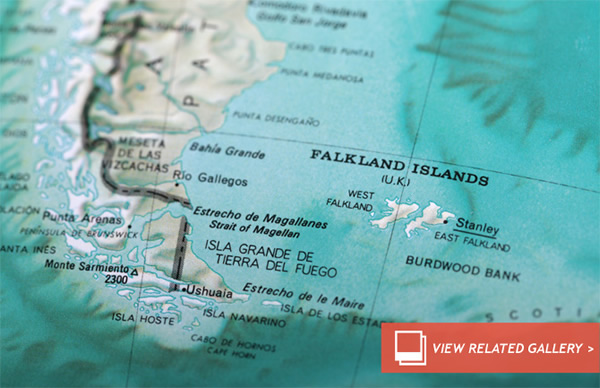Twitter: GOCE Burned Up Over Falkland Islands
After the European Space Agency (ESA) lost radio communications with its Gravity field and steady-state Ocean Circulation Explorer (GOCE) satellite late on Sunday, the outcome was clear — the gravity probe had reentered the Earth’s atmosphere and burned up. What was less certain, however, was where the spacecraft had burned up.
The mystery of GOCE’s reentry has now been solved — the one-ton satellite came down over the Falkland Islands, a British overseas territory, 300 miles east of the Patagonian coast in the South Atlantic Ocean.
Falklands resident Bill Chater took to Twitter to report seeing GOCE’s reentry. “We saw it burn up from the Falklands at about 9.20pm last night. Came from the South breaking up into bits,” he said. The accompanying photo appears to show the trail of smoky debris high in the twilight sky over East Falklands.
Describing what he saw to the BBC’s Jonathan Amos, Chater continued: “Driving southwards at dusk, it appeared with bright smoke trail and split in 2 before splitting again into more and going on north.”
In response to that eyewitness account, satellite watchers chimed in to corroborate Chater’s possible GOCE sighting. “Time is a close enough match, (geographic) location as well. Falkland currently UT -3h, so ~21:20 is ~00:20 UT. I’d say it is it,” reported satellite tracker Marco Langbroek.
However, this could have all been coincidence until ESA’s official Twitter account took up the call to investigate, forwarding the eyewitness account to ESA Operations at Darmstadt, Germany.
Then came confirmation: “ESOC experts confirm – this is #GOCE!” announced the official ESA Twitter feed.
From possible sighting to official confirmation, the whole process of GOCE’s demise was documented via Twitter, a testament to the power of social media when tracking space events in real time. Wonderful.
Image credit: Getty(Nov 11, 2013 04:01 PM ET // by Ian O'Neill)












